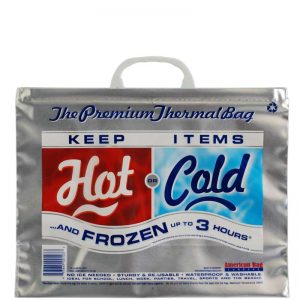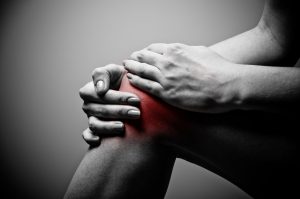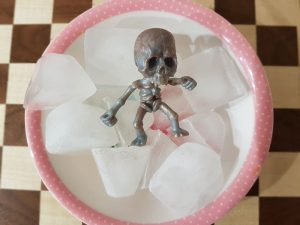Moist Heat or Dry Heat or Cold Treatment for DOMS?
There is a lot of controversy regarding the use of heat and cold for musculoskeletal injury rehabilitation. Within the world of heat, there is the further question as to whether the heat should be moist or dry. In an effort to answer some of these questions, this article summarizes some of the findings of Jerrold Petrofsky and colleagues from Loma Linda University in California, who have conducted a series studies comparing various heat and cold treatments for reducing delayed onset muscle soreness (DOMS). Here is a report of some of their findings.
The Physiologic Mechanism of Heat
According to a review by Petrofsky and colleagues, the effect of heat on pain is mediated by heat sensitive calcium channels. These channels respond to heat by increasing intracellular calcium. This, in itself, generates action potentials that increases stimulation of sensory nerves and causes the feeling of heat in the brain. These channels are part of a family of receptors called TRPV (Transistor Potential Receptor Potential Vanillioid ion channel), which are sensitive to heat. Once activated, they can also inhibit the activity of purine pain receptors, which are located in the peripheral small nerve endings. For peripheral pain, for example, heat can directly inhibit pain. However, when pain is originating from deep tissue, heat stimulates peripheral pain receptors, which can alter what has been termed “gating” in the spinal cord, thereby reducing deep pain.
Heat also can increase blood circulation via same TRPV receptors along with nociceptors, which increases blood flow in response to heat. This increase in circulation caused by heat is considered to be essential in tissue protection and repair of tissue damage.
Types of Moist and Dry Heat Application
Moist heat can be applied by heat packs or hydrotherapy. Dry heat can be applied by heat packs or wraps, or by devices that warm tissue such as diathermy and ultrasound.
Hydrocollator heat packs are usually maintained at 71 degrees Celsius (160 degrees Fahrenheit), and are separated from the skin by a number of layers of towels. Warm hydrotherapy uses water at 40 degrees (105 degrees Fahrenheit) and involves immersing a limb in the water. Hydrotherapy heating is usually used for short periods of time, for example, 5-20 minutes. Studies have shown that moist heat appears to be more advantageous in pain relief compared to many dry heat modalities.
Most of these heat modalities are used for short periods of time, for example, 20 minutes maximum. Many studies have shown that short duration of heat application caused minimal, if any, change to skin temperature. Therefore, in deep injuries, heat application for short duration seems to cause pain relief through the gate control theory of pain in the central nervous system and not through the effects upon the peripheral nervous system.
Long term application of heat, such as in chemical heat wraps, can apply heat for hours to gradually warm deep tissue. Dry chemical heat wraps heat deep tissue much more slowly; therefore pain relief is delayed by approximately 30 minutes or more. Heat penetration with chemical moist packs, on the other hand, is faster but the duration of this pack is usually between 30 minutes and 2 hours.
Moist Heat versus Dry Heat
To see whether moist heat or dry heat is more effective, a study published in December 2013 issue of Journal of Clinical Medicine Research conducted a study to compare moist and chemical dry heat for healing and pain relief. The study compared chemical moist heat lasting 2 hours to dry heat lasting 8 hours to distinguish which heat modality worked best on the symptoms of delayed onset muscle soreness (DOMS).
One hundred healthy individuals between the ages of 20 and 40 years of age were recruited. The participants exercised for 15 minutes by performing squats. Before and for 3 days after the exercise, strength, muscle soreness, tissue resistance, and passive knee ROM were recorded. Moist heat or dry heat was applied in different groups either immediately after exercise or 24 hours later.
The research results showed that immediate application of heat after DOMS-induced exercise, either dry (8-hour application) or moist (2-hour application), had a similar preservation of quadriceps muscle strength and muscle activity. Both dry and moist heat application resulted in pain relief from DOMS, but moist heat resulted in a greater pain reduction, and with only 25% of the time of application of the dry heat.
Cold Versus Heat
In a 2015 study published in Journal of Strength & Conditioning Research, the same group of authors compared cold versus heat treatment for reducing DOMS.
One hundred subjects performed leg squats for 15 minutes and heat or cold was applied immediately after or 24 hours after exercise. Control subjects performed the same exercise but no heat or cold was applied afterward. Outcomes showed that:
- Control subjects lost 24% strength after exercise, while subjects with heat or cold applied immediately after exercise lost only 4% strength.
- Either heat or cold applied after exercise was significantly better to prevent elastic tissue damage compared to controls.
- Cold applied after 24 hours was better than heat applied after 24 hours for strength recovery.
- Either heat or cold applied immediately after exercise caused no loss in muscle myoglobin.
- But heat or cold applied after 24 hours showed no less muscle damage from myoglobin than control subjects.
It was concluded that both cold and heat appear to be efficacious in reducing muscle damage after exercise when compared to the control group. However, cold application, either immediately after exercise or 24 hours after exercise, was superior to the application of heat in reducing pain.
The Effect of Sustained Heat
The same group of authors conducted another study, published in July 2017 to assess the impact of sustained heat application for a period of 8 hours, either immediately after or 24 hours after exercise on people with DOMS in large skeletal muscle groups. Both objective and subjective signs and symptoms were measured.
The study had a similar design with three groups of 20 subjects, with an age range from 20 to 40 years. Squats were performed in three 5-minute bouts to initiate DOMS. One group had heat applied immediately after exercise; a second group had heat applied 24 hours after exercise; and a third group was the control group in which no heat was applied.
The most significant outcome was a reduction in soreness in the group that had low-temperature heat wraps applied immediately after exercise. There was benefit to applying heat 24 hours after exercise, but to a smaller extent.
The authors concluded that although cold is commonly used after heavy exercise to reduce soreness, heat applied just after exercise also seems very effective in reducing soreness. But unlike cold, heat has the added advantage of increasing flexibility of soft tissue and tissue blood flow. However, it is still probably better to use cold to reduce swelling for joint injury and dysfunction.




